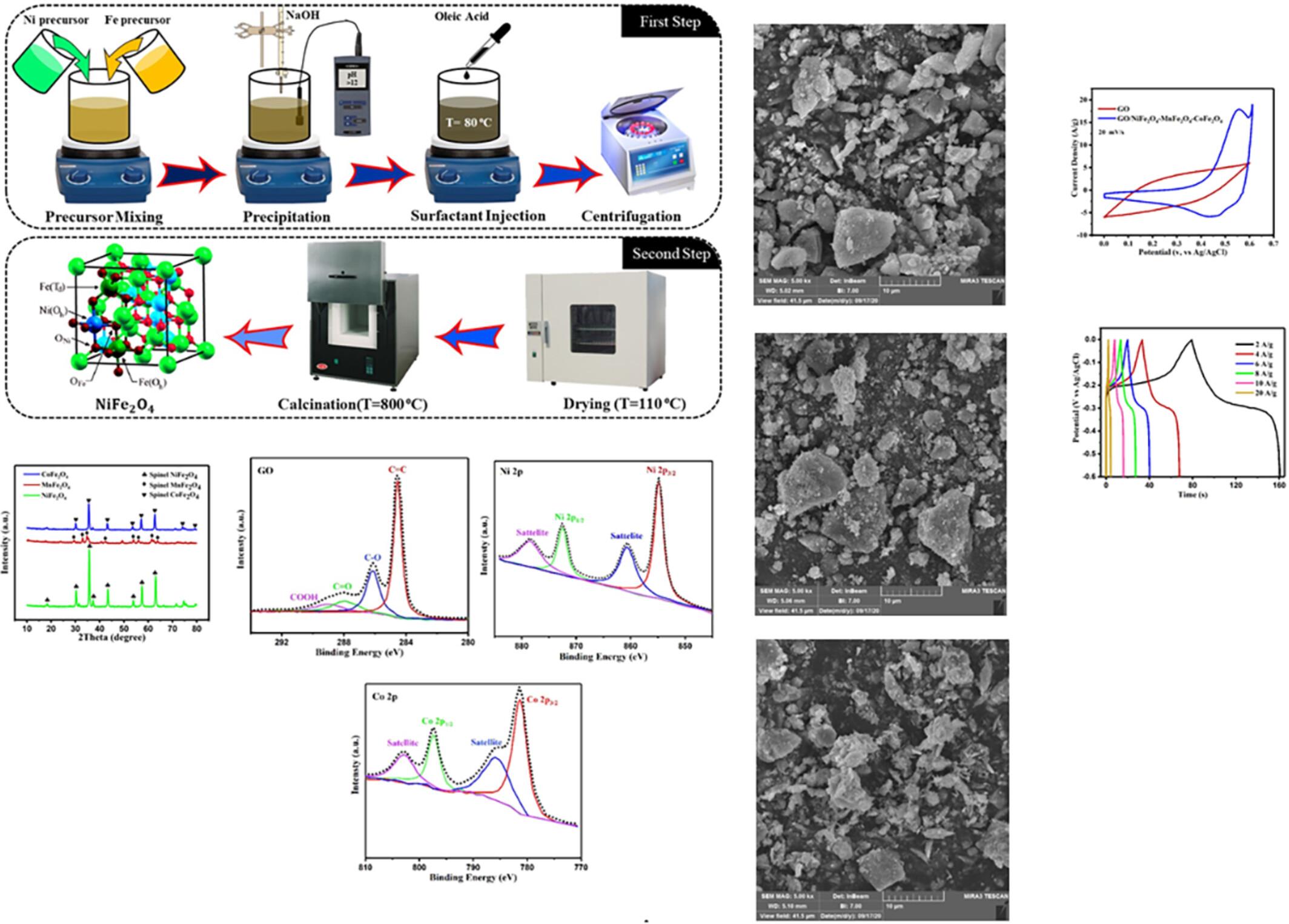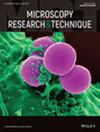Fabrication of composite GO/NiFe2O4-MnFe2O4-CoFe2O4 anode material: Toward high performance hybrid supercapacitors
Abstract
Here, NiFe2O4, MnFe2O4, and CoFe2O4 nanoferrites are prepared by coprecipitation synthesis technique from nickel, manganese, and cobalt chloride precursors. Synthesized nanoferrites are annealed by calcination process at 800°C for 2 h. To produce a novel anode electrode material for asymmetric supercapacitors (ASCs), the composite material of GO/NiFe2O4-MnFe2O4-CoFe2O4 is fabricated. Physicochemical aspects of the synthesized nanoferrites are evaluated. X-ray diffraction, Fourier transform infrared spectroscopy, scanning electron microscopy, and x-ray photoelectron spectroscopy tests are conducted, respectively. The electrochemical activities are studied by cyclic voltammetry, glavanostatic charge–discharge, and electrochemical impedance spectroscopy (EIS) in 2 M KOH as the electrolyte. In three electrode system, the novel GO/NiFe2O4-MnFe2O4-CoFe2O4 electrode displays a high specific capacity of 325 C g−1 and preserves about 99.9% of its initial specific capacity. The GO/NiFe2O4-MnFe2O4-CoFe2O4//GO ASCs device is assembled using GO/NiFe2O4-MnFe2O4-CoFe2O4, GO, and 2 M KOH solution as the positive electrode, negative electrode, and electrolyte, respectively. Significantly, the GO/NiFe2O4-MnFe2O4-CoFe2O4//GO ASCs represent an outstanding energy density of 50.5 W h kg−1 at power density of 2560 W kg−1. Through the long-term charge discharge cycling tests, this ASC device illustrates about 93.7% capacity retention after 3000 cycles. Then, the present study provides the NiFe2O4-MnFe2O4-CoFe2O4 composite nanoferrites as a novel favorable candidate for anode material.
Research Highlights
- Simple and green synthesis of magnetic NiCo2O4/NiO/rGO composite nanostructure using natural precursor.
- Fabricating and designing an efficient semiconductor for degradation ability.
- NiCo2O4/NiO/rGO nanocomposite with advanced photo elimination catalytic routine.
- The photocatalytic performance of NiCo2O4/NiO/rGO was surveyed for the degradation of various antibiotics below visible radiation.
- Efficiency was 92.9% to eliminate tetracycline.
We developed a synergetic approach to prepare a novel active material composed of GO/ NiFe2O4-MnFe2O4-CoFe2O4 by a hybrid electrode material. Green synthesis method was accomplished to attain NiCo2O4/NiO/rGO nanocomposite with advanced photo elimination catalytic routine. The oxide nanobundles were prepared with a rapid and eco-friendly method. In order to investigation of the effect of natural precursor, morphology and shape of nanoproducts was compared. NiCo2O4/NiO/rGO nanobundles possess a suitable bandgap in the visible area.


 求助内容:
求助内容: 应助结果提醒方式:
应助结果提醒方式:


